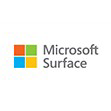
October 23, 2024
The many faces of online scams
In the modern digital era, it’s essential to be aware of various scams that could potentially target you. Online scams are fraudulent schemes designed to deceive you into giving away personal information, money, or access to their devices.
Online scams come in many forms, and they are constantly evolving. The primary goal of scammers is to trick you into providing sensitive information or money. This article helps you understand and recognize common types of online scams.
Phishing scams
Phishing scams are one of the most prevalent types of scams. They involve fraudulent emails, messages, or websites that appear to be from legitimate sources, such as banks, social media platforms, or even your company web. The goal is to trick you into providing personal information, such as passwords, credit card numbers, or social security numbers.
To protect yourself from phishing scams:
- Be cautious of unsolicited emails or messages asking for personal information.
- Verify the sender's email address and look for any inconsistencies.
- Avoid clicking links or downloading attachments from unknown sources.
- Use multi-factor authentication to add an extra layer of security to your accounts.

Credit: Designer in Copilot
Tech support scams
Tech support scams involve scammers pretending to be from a reputable tech company, such as Microsoft, and claiming that your device has a problem that needs immediate attention. They may ask you to provide remote access to your device or to pay for unnecessary services.
To avoid tech support scams:
- Be skeptical of unsolicited calls or messages claiming to be from tech support.
- Do not grant remote access to your device to unknown individuals.
- Verify the legitimacy of the tech support service by contacting the company directly using official contact information.
Online shopping scams
Online shopping scams involve fraudulent websites or sellers that trick you into paying for goods or services that do not exist. These scams can be particularly convincing, as they often use professional-looking websites and fake reviews.
To protect yourself from online shopping scams:
- Shop only on reputable websites and verify the seller's credibility.
- Use secure payment methods, such as credit cards or payment services with buyer protection.
- Be cautious of deals that seem too good to be true.
Protect your Microsoft Surface and other devices
As a Microsoft Surface user, you can take steps to protect your device and personal information from scams:
- Keep your software updated: Regularly update your operating system and software to ensure you have the latest security patches and features.
- Use strong passwords: Create strong, unique passwords for your accounts and change them regularly. Consider using a password manager to keep track of your passwords.
- Enable security features: Utilize built-in security features, such as Windows Defender, to protect your device from malware and other threats.
- Be cautious with public Wi-Fi: Avoid accessing sensitive information or making financial transactions over public Wi-Fi networks. Use a virtual private network (VPN) for added security.
- Educate yourself: Stay informed about the latest scams and cybersecurity threats. Microsoft offers resources and support to help you stay safe online.
Enjoy a safer and more secure online experience
Scams are a significant threat in today's digital world, but by staying informed and taking proactive measures, you can protect yourself, your Microsoft Surface, and other devices from fraudulent schemes. Remember to be cautious of unsolicited communications, verify the legitimacy of requests for personal information, and utilize the security features available on your device. By doing so, you can enjoy a safer and more secure online experience.
Products featured in this article

Microsoft Surface
Related topics

Surface Pro 11ᵗʰ Edition vs. Surface Pro 9

How to use Windows Memory Diagnostic

